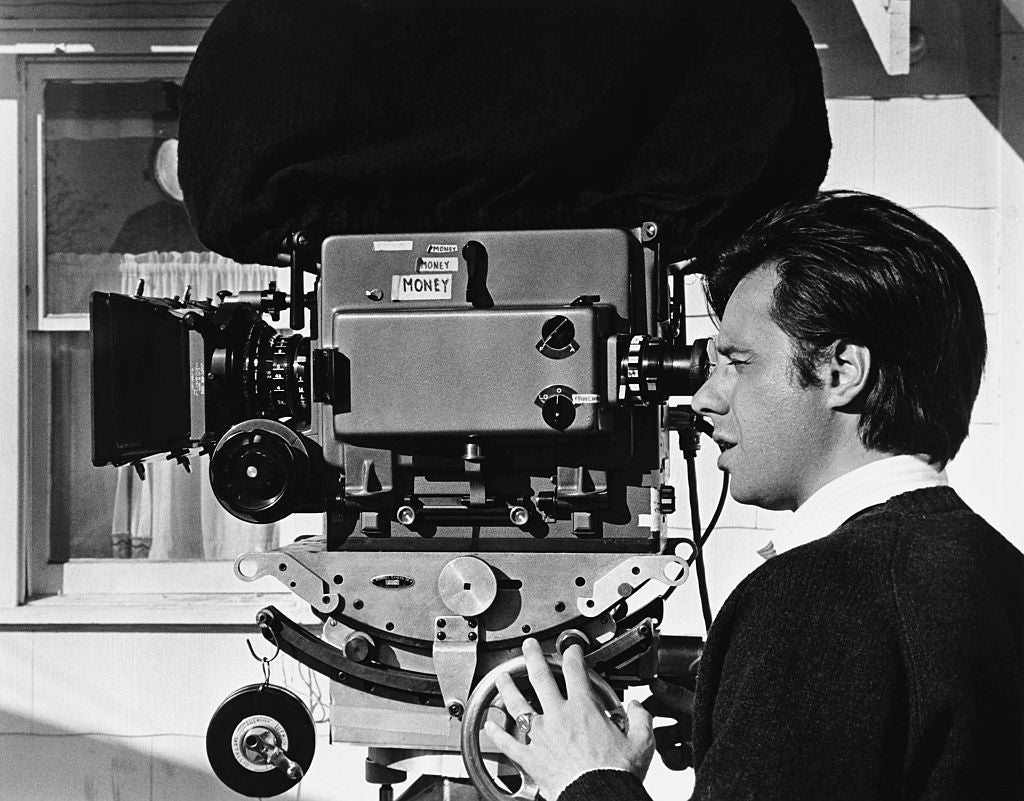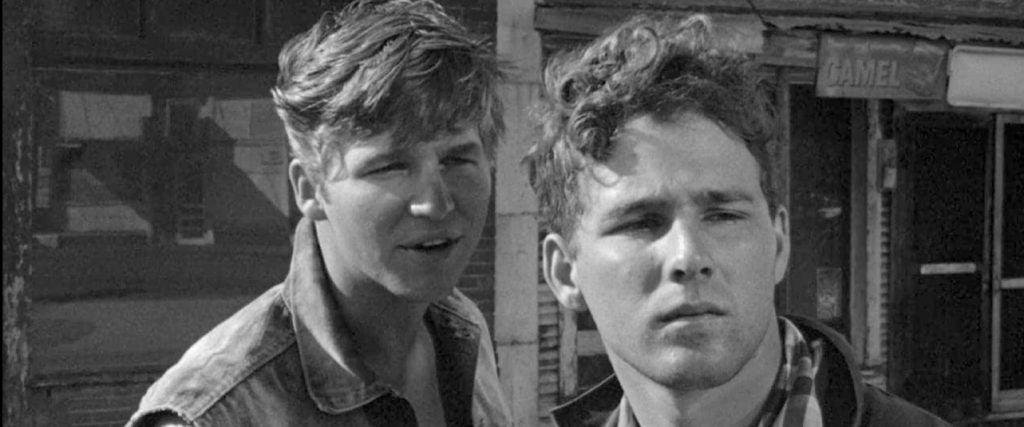Peter Bogdanovich knew his dilemma succinctly. In a 2019 interview with Vulture, he was asked if he thought he was a good director of women. “Well, I like women,” he replied. “I don’t know if I’m particularly good at women.” The filmmaker, who died today at the age of 82, was hardly alone in his business in feeling that way. It’s an old trope — and sometimes an annoying, simplistic one — that great male artists are both obsessed with and fairly obtuse about women, putting them on pedestals in their work but treating them shabbily otherwise. But Bogdanovich’s romantic life was almost as famous as his movies, most notably his marriage in the 1960s to production designer Polly Platt, whom he divorced after having an affair with actress Cybill Shepherd. (That relationship ended in the late 1970s when Shepherd went to see him in Singapore on set for a film he was shooting: “I was screwing around … and she came to visit and she got what was going on,” he admitted in that same Vulture profile.)
But Bogdanovich’s greatest film acknowledges not just how clueless men are about women but also how men stumble into adulthood, crippled with jealousy and insecurity and romantic urges they can’t fully comprehend. That it’s the same film in which Bogdanovich met Shepherd only makes its investigation of young manhood all the more bittersweet.
Last year was the 50th anniversary of The Last Picture Show, as seminal a coming-of-age film as America has ever produced. Based on the novel by Larry McMurtry, who co-wrote the screenplay with Bogdanovich, the movie starred newcomers Timothy Bottoms, Jeff Bridges and Shepherd as, respectively, Sonny, Duane and Jacy, teenagers living in a nowhere Texas town in the early 1950s. Sonny and Duane are best friends, but Duane is the better-looking and more confident of the two, which probably explains why he’s dating Jacy, their school’s prettiest girl.
Soon, it becomes apparent that Sonny is envious of his buddy, secretly wishing he could have a girlfriend as gorgeous as Jacy. (Early on, Sonny and his steady split, largely because he’s not content with the romantic options available to him.) Eventually, he begins an affair with an older woman, Ruth (Cloris Leachman), the wife of his football coach, but that doesn’t seem to fully satisfy him, either. Not that Duane’s love life is so great: Desperate to find an escape from this sleepy community, Jacy considers Duane little more than a stopgap until some more promising beau appears, a feeling cemented by a comically disastrous attempt on Duane’s part to have sex with her in a hotel. (They’re both virgins.)
The Last Picture Show contains the DNA for so many teen comedies and dramas of the last half-century. Young people determined to get laid, both scared and entranced by the prospect of going out into the world, clinging to childhood friendships while realizing that those bonds don’t last: You can feel Bogdanovich’s film in everything from Diner to American Pie to a handful of Richard Linklater pictures. But few of those successors captured the clear-eyed poignancy that Bogdanovich conveyed. Filmed in black and white and shot in a classic style meant to make the story seem timeless, even mythic, The Last Picture Show is about things going away: a town, its closing-down movie theater, youth and innocence itself. But unlike so many films of its kind, The Last Picture Show isn’t nostalgic or particularly weepy about any of that. The movie understands that that’s the way it is. Life keeps moving. Things change.
That lack of sepia-stained wistfulness probably explains why the film’s portrait of manhood still seems so relevant. Sonny and Duane are quintessential young, straight white men. They play sports. They talk about girls. They think they’re immortal. Bottoms and Bridges are so fresh-faced it’s nearly heartbreaking: They’re playing kids who don’t know all the stuff they don’t know. Sonny and Duane both pine for Jacy, but neither of them are going to get her. The Last Picture Show is a romantic triangle in which one of the legs doesn’t really want to be part of the equation.
Like any classic film, The Last Picture Show has plenty of lore attached to it. How Bogdanovich, who was married to Platt (the movie’s production designer and her husband’s close creative collaborator), fell for Shepherd, who was dating Bridges. And so, in the midst of the shoot, the director and his star are having an affair, which Platt and Bridges were aware of. “Polly figured it out and moved out of our suite,” Bogdanovich told Vulture. “She sort of left it at, ‘You deal with it,’ as though it was an issue, which it was. I didn’t know how to deal with it. Cybill and I kept saying this was just during the picture. We were not going to be going out after the movie’s over. But we fell in love.” (As for Bridges, “he didn’t make an issue about it at all,” according to Bogdanovich.)
That sort of gossip-y stuff helps elevate great movies into legend, often to the detriment of the women in these behind-the-scenes stories. (One of the many great benefits of Karina Longworth’s podcast You Must Remember This was its season championing Platt as a significant creative force who has been often overshadowed by her more famous ex-husband.) But even if Bogdanovich was never particularly good with women, at least in his personal life, he’s just as compassionate in his depiction of Jacy as he is with Sonny and Duane.

It would have been very easy to portray Jacy as an odious “gold digger” cliché — just a pretty, shallow young woman who manipulates dumb horndogs into getting what she wants. Instead, look how sympathetic the movie is to her plight, as well as that of the other women in the film. Whether it’s Jacy’s resentful mother Lois (Ellen Burstyn), trapped in a loveless marriage and dabbling in affairs, or Ruth, suffering from depression and a neglectful husband and coming to depend on Sonny’s affections, The Last Picture Show is populated by women with even fewer prospects than their male counterparts. In this rigidly patriarchal society, their job is to be housewives — or, in the case of the unhappy, single waitress Genevieve (Eileen Brennan), serve as a sort of peripheral figure to the action. They’re the supporting players in the men’s narrative.
This was Shepherd’s first film role, but similarly to Bottoms and Bridges, she captured the fleeting vibrancy and nagging uncertainty of youth — except that Jacy understands that, unlike Sonny and Duane, she has to be careful about the choices she makes. Picking the right man is paramount because, in the 1950s, that will determine the course of the rest of her life. Shepherd’s performance is remarkable in how it communicates her character’s predicament without ever saying it aloud. Bogdanovich understood enough to give Shepherd the room to create something so unforgettable.
Films about young manhood tend to be indulgent of their male characters. The Last Picture Show isn’t: It’s not that Bogdanovich detests Sonny and Duane, but he grasps the futility of their stabs at finding love, and he’s demonstrative about how they can hurt those around them. There’s no more painful moment in the film than when, after Jacy impulsively pursues Sonny for a romantic relationship, he unceremoniously ghosts Ruth. The Last Picture Show isn’t shy about the depth of Sonny’s cruelty as he disposes of her so callously because he thinks he’s found his dream girl. When everything goes wrong for Sonny at the film’s end — Duane has left for the war, Jacy has dumped him, and his friend Billy (Sam Bottoms) has died — he tries to return to Ruth, who lets him have it. Ultimately, she softens, not because she loves him, but because she finally sees him as just a weak little boy. Ruth affords Sonny a brief moment of pity that I’m not sure the film thinks he deserves.
There are other characters in The Last Picture Show — including Ben Johnson as the kindly old Sam the Lion, a father figure to the boys — but the movie is primarily about Sonny and Duane, navigating their senior year oblivious of anything beyond their own noses and hormones. But unlike so many lame teen sex comedies, they’re not one-dimensional jerks or morons. Sonny and Duane have souls, although they struggle to tell each other how they feel, either when they finally have it out about their shared infatuation with Jacy or when Sonny says goodbye to his buddy before he ships off for Korea.
The film is achingly accurate about how young men interact with one another, more easily able to communicate through anger than vulnerability. Both Sonny and Duane adore Jacy, but The Last Picture Show could also be viewed as a love story between these two men, who don’t have the emotional vocabulary to express such sentiments to one another.
Bogdanovich made other great films after The Last Picture Show, but none this perfect and true. The film is right about the passage of time and the inevitability of everything going away, but its three main characters seem to live on. They’re alive in every crush you had as a teenager that went nowhere — or in that one really great friend who you shared everything with, even if it spurred a competitiveness between the two of you.
Great male artists don’t always do great by women in their work, although the female characters in What’s Up, Doc? and Paper Moon would suggest that wasn’t true of Bogdanovich. It’s certainly not the case with his masterpiece. In The Last Picture Show, women may be unfathomable, to both the two friends and Bogdanovich, but the film recognizes that a lot of their miseries are because of men. Movie theaters close and small towns disappear, but that immutable fact remains.

